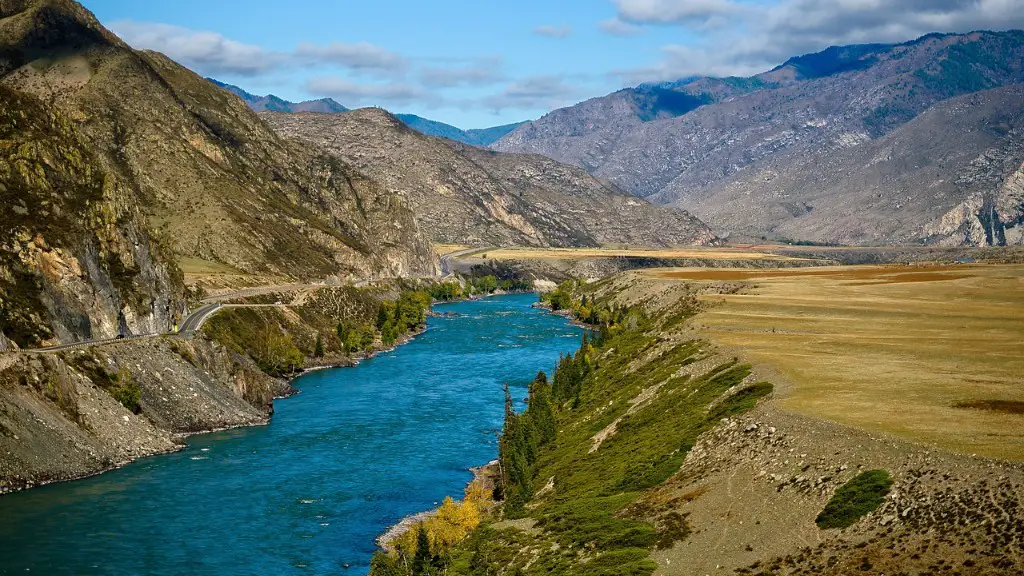Millions of people in the US are affected by flooding from the Mississippi River each year, though the severity of such flooding depends on a variety of factors. The Mississippi’s waters start in Minnesota and widen as they pass through ten states in their journey to the Gulf of Mexico. The variety of environments along the river’s path, combined with the effects of deforestation, loss of wetlands, and global climate change all contribute to flood severity in different ways. In this article, we will explore how bad Mississippi River flooding can be, what factors can affect it, and what people and organizations are doing to mitigate this situation.
For centuries, the Mississippi River has played a major role in the US economy, particularly through shipping and agriculture. However, in recent years there has been an increase in floods threatening communities along the river. According to the US Geological Survey (USGS), the period from 2011-2015 saw a historic level of flooding, with some states experiencing their worst floods in 500 years. This is a serious concern for many people who live in the path of the river, and for anyone who relies on the river for their livelihoods.
The USGS states that flooding in the Mississippi can be caused by a variety of factors. These include heavy rains, snowmelt, and droughts, all of which can contribute to increased water levels in the river. Additionally, deforestation, land development, and water pollution have been blamed for worsening flood conditions, as they increase runoff and reduce the amount of water filtered by wetlands. As global temperatures rise, climate change is also affecting flooding by making droughts longer and changing the intensity of storms.
Experts suggest that floods can be mitigated by making changes to land use and water management practices. For example, restoring wetlands can help reduce flooding by slowing down runoff and capturing extra water. In some areas, officials are trying to buy out homeowners in flooded areas, as this reduces the number of people at risk from flooding. Additionally, the US Army Corps of Engineers has built reservoirs and levees to protect some towns from flooding.
However, there are growing concerns that these measures are not enough to protect people from floods. For example, some experts warn that constructing levees can worsen flooding downstream, as they act as a barrier to the natural flow of water. Additionally, the levees can become overtopped in the event of a severe flood, putting people and property at risk. Furthermore, restoring wetlands is expensive and may not be feasible in areas where wetlands have been lost.
It is clear that Mississippi River flooding can have severe impacts on people and property, and that more needs to be done to protect communities from these floods. Federal and state agencies have been working to reduce flood risk, but it is important that more attention is given to reducing the risk of floods and protecting vulnerable communities.
Effects of Flooding
Flooding along the Mississippi can threaten the lives and livelihoods of people who live in the path of the river. The waters can cause serious damage to homes, businesses and infrastructure such as roads, bridges and railways. Additionally, the floods can damage or destroy crops and disrupt the transportation of goods. Furthermore, the floods can release pollutants into rivers, lakes and other waterways, which can affect water quality and public health.
The 2011-2015 floods damaged or destroyed more than 16,000 homes and businesses in the Midwestern US, with repairs costing an estimated $3 billion. Additionally, agricultural production along the river was disrupted with an estimated $35 billion in losses. These costs underscore the importance of preventing floods and minimizing their impacts when they do occur.
Solutions for Flood Prevention
Experts suggest that the best way to reduce the risk of serious flooding is to take preventative steps. This includes the use of flood forecast systems and the construction of structures such as levees and dams to divert and capture excess water. Additionally, land owners can take steps to reduce the risk of flooding on their property. These include planting trees and vegetation to reduce runoff and building retention ponds or basins to store extra water.
Many states and local governments offer grants, loans and other assistance programs to help property owners protect their land from flooding. Examples of such assistance include buying out flooded properties, offering grants to implement flood control measures, installing flood warning systems, and providing financial assistance for property repairs. Additionally, insurance companies offer homeowners and businesses the ability to purchase flood insurance to protect themselves from damages.
Effects of Global Warming
Global warming is a major factor in the severity of flooding in the Mississippi River basin. According to climate scientists, the effects of climate change are already being felt in the region. Warmer temperatures are increasing the frequency and intensity of storms, which contribute to the risk of flooding. Additionally, climate change leads to more intense droughts, which reduces the water levels of the Mississippi and can lead to higher levels of flooding when storms do occur.
Climate change also affects the way floods are managed. For example, as climate change worsens droughts, the US Army Corps of Engineers is reducing water levels in reservoirs to conserve water for use during droughts. Unfortunately, this means that there is less water storage capacity for floodwaters, which increases the risk of flooding.
It is clear that global warming is making flooding in the Mississippi River basin worse, and it is important that measures are taken to reduce the risk of floods in this area. This includes taking steps to reduce global warming, such as reducing carbon emissions, and taking steps to reduce the risk of flooding, such as implementing flood control measures.
Public Response
In recent years, there has been an increase in public awareness and concern about the effects of flooding in the Mississippi River basin. Many citizens have joined organizations to call for action, such as the Mississippi River Coalition, which educates and advocates for flood prevention in the region. Additionally, many communities have organized rallies and marches to call for increased investment in flood protection measures.
The public response to flooding in the region has been positive. For example, legislation has been passed in a number of states that provide financial assistance for flood prevention and public awareness campaigns. Additionally, a number of organizations have been established to protect and restore wetlands, which helps to reduce flood severity.
It is encouraging to see people coming together to take action on the effects of floods in the Mississippi River region. It is important that these efforts continue and that steps are taken to reduce the risk of floods in the years ahead.
Economic Impacts
In addition to the physical damage that floods can cause, they also have a significant economic impact in the region. Flooding can disrupt trade and commerce, as waterways become too dangerous and impassible for boats. Furthermore, businesses along the river can suffer if they are unable to keep their operations running during a flood.
Furthermore, flooding can reduce tourism in the region, as people may be unwilling to visit areas that are prone to flooding. Floods also negatively affect crop production, meaning farmers in the region may experience a decrease in their income due to flooding. As a result, flood prevention and mitigation measures are essential to maintain the economic stability of the region and to protect the livelihoods of those living and working along the Mississippi River.
Environmental Impacts
The environment along the Mississippi River also suffers from flooding, as the waters can disrupt wildlife and damage ecosystems. The floods can disturb habitats and reduce the amount of food available for animals, and can cause the death of fish and other animals if they enter the river. Additionally, floods can release pollutants into the river, which can affect water quality and harm the aquatic life.
Floods can also lead to soil erosion, as rushing waters can carry away soil and sediment. Additionally, the floods can damage vegetation, and can reduce the number of plants and trees in the region, reducing the amount of carbon dioxide that is absorbed from the atmosphere.
It is clear that the effects of flooding on the environment along the Mississippi River can be severe and lasting, and that steps need to be taken to reduce the risk of flooding to protect the environment. This includes restoring wetlands and taking measures to reduce deforestation and land development.





